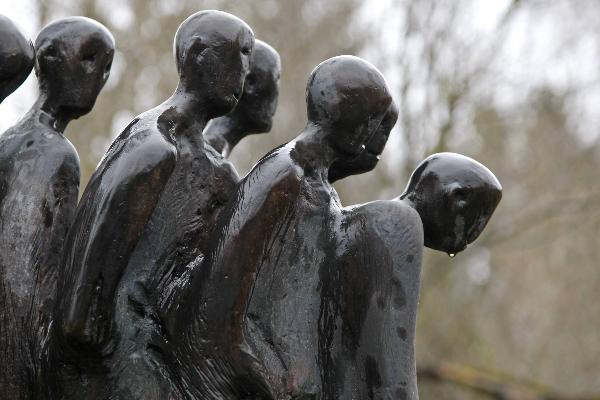“The work of Aaron and Raphael Haas is a stroke of luck for the culture of remembrance in our country. It testifies to an awareness of history, of responsibility and of oneself that democracy in our country – that all of us – desperately need, especially in these turbulent and worrying times.” Charlotte Knobloch, survivor of the Holocaust and President of the Israeli Cultural Community in Munich and Upper Bavaria, penned these words two years ago in her preface to the Haas brothers’ book.
The duo trawled through interrogation records and denazification documents and conducted interviews with contemporary witnesses. Their dedication also has to do with their studies. “One of the topics we addressed in the first semesters was the constitution,” the brothers note, “and how [Germany’s] Basic Law grew out of the horrors of National Socialism. That was what prompted our interest in this subject. But our main motivation came from the fact that our own village was affected – although we didn’t know that to begin with.”
Never mentioned at school
It turned out that little research had been done into the events of 6-7 April 1945. “Yet precisely after such atrocities, this needs to be done so that we can learn from them,” Aaron Haas stresses. The issue had never been mentioned at school, where “teaching on the subject went strictly by the book, covering denazification and such matters, but never touching on local history and the death marches.” In one lesson, the teacher handed out a worksheet about extermination camps and told pupils to “leave the room if this is too much for you”. Hass believes this is the wrong way to approach the subject: He and his brother wanted to do things differently.
They heard of the death marches more or less by chance from their mother, who was not yet born when they took place. Her account was only indirect, however, “which made it all the more important for us to find contemporary witnesses here in the village”. They found twelve in Neunheim and Ellwangen, and were also able to talk to two concentration camp survivors. Some, Raphael Haas says, reached out to them of their own accord after the initial reports had been published on a website. “By that time, we had so much material that we came up with the idea of making a book out of it.”
Hard for contemporary witnesses to talk about the subject
Things did not always go so smoothly. “We also talked to contemporary witnesses who had a very hard time with it. You noticed that this was a really harrowing experience in their lives. They first had to overcome inner barriers to be able to talk about it.” In the end, though, he says that they felt relieved. They were still children when it all happened, and “the incidents were kept quiet in the family”.
In that fateful 24-hour period in 1945, 27 prisoners died in Neunheim alone. “Most of them were physically struck down. The locals saw what was happening,” Aaron Haas insists. Women from the village had to provide for the prisoners. “When food was handed out, there were tumultuous scenes. Guards intervened with their batons, brutally beating this one or that one.” Others were so weak that they collapsed while marching: “They were loaded onto a handcart that was pushed alongside and buried with the others in the quarry.”
Despite strict surveillance, one prisoner from the concentration camp managed to slip away into a little house. “The people who lived there hid him.”
A monument to commemorate the death marches
The Haas brothers describe how the people of Neunheim reacted to their research: “The people of our generation are all astonished. They never knew about this before.” And the municipality? “We suggested that the local authority in Ellwangen should commission a monument to be erected at the quarry in Neunheim. Regarding the purpose and cost of the monument, they were very reluctant to begin with. There were also varying ideas about where the monument should be placed. But it is now going to be put up in the large quarry where the prisoners were buried.”
The brothers’ research has won multiple awards, including first prize in the Konrad Adenauer Foundation’s DenkT@g 2018/19 competition and the 2021 Baden-Württemberg State Prize for Local History Research.
Their precise account of the local past was also acknowledged by the Dachau concentration camp. Dr. Jascha März, Head of Scientific Documentation in Dachau, notes that their work shows how deeply the events of that time have scarred people. In her preface, Charlotte Knobloch put it this way: Aaron and Raphael Haas have “erected a monument to the victims of the death marches and saved them from the fate of being forgotten”.
Aaron und Raphael Haas Todesmärsche 1945 – "unendlich war das Leid", 124 Seiten, Tredition 2020

